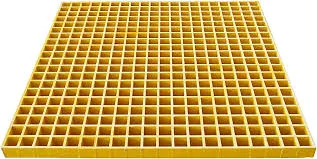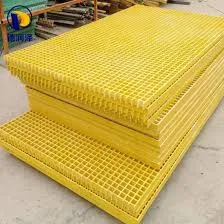
-
 Afrikaans
Afrikaans -
 Albanian
Albanian -
 Amharic
Amharic -
 Arabic
Arabic -
 Armenian
Armenian -
 Azerbaijani
Azerbaijani -
 Basque
Basque -
 Belarusian
Belarusian -
 Bengali
Bengali -
 Bosnian
Bosnian -
 Bulgarian
Bulgarian -
 Catalan
Catalan -
 Cebuano
Cebuano -
 China
China -
 China (Taiwan)
China (Taiwan) -
 Corsican
Corsican -
 Croatian
Croatian -
 Czech
Czech -
 Danish
Danish -
 Dutch
Dutch -
 English
English -
 Esperanto
Esperanto -
 Estonian
Estonian -
 Finnish
Finnish -
 French
French -
 Frisian
Frisian -
 Galician
Galician -
 Georgian
Georgian -
 German
German -
 Greek
Greek -
 Gujarati
Gujarati -
 Haitian Creole
Haitian Creole -
 hausa
hausa -
 hawaiian
hawaiian -
 Hebrew
Hebrew -
 Hindi
Hindi -
 Miao
Miao -
 Hungarian
Hungarian -
 Icelandic
Icelandic -
 igbo
igbo -
 Indonesian
Indonesian -
 irish
irish -
 Italian
Italian -
 Japanese
Japanese -
 Javanese
Javanese -
 Kannada
Kannada -
 kazakh
kazakh -
 Khmer
Khmer -
 Rwandese
Rwandese -
 Korean
Korean -
 Kurdish
Kurdish -
 Kyrgyz
Kyrgyz -
 Lao
Lao -
 Latin
Latin -
 Latvian
Latvian -
 Lithuanian
Lithuanian -
 Luxembourgish
Luxembourgish -
 Macedonian
Macedonian -
 Malgashi
Malgashi -
 Malay
Malay -
 Malayalam
Malayalam -
 Maltese
Maltese -
 Maori
Maori -
 Marathi
Marathi -
 Mongolian
Mongolian -
 Myanmar
Myanmar -
 Nepali
Nepali -
 Norwegian
Norwegian -
 Norwegian
Norwegian -
 Occitan
Occitan -
 Pashto
Pashto -
 Persian
Persian -
 Polish
Polish -
 Portuguese
Portuguese -
 Punjabi
Punjabi -
 Romanian
Romanian -
 Russian
Russian -
 Samoan
Samoan -
 Scottish Gaelic
Scottish Gaelic -
 Serbian
Serbian -
 Sesotho
Sesotho -
 Shona
Shona -
 Sindhi
Sindhi -
 Sinhala
Sinhala -
 Slovak
Slovak -
 Slovenian
Slovenian -
 Somali
Somali -
 Spanish
Spanish -
 Sundanese
Sundanese -
 Swahili
Swahili -
 Swedish
Swedish -
 Tagalog
Tagalog -
 Tajik
Tajik -
 Tamil
Tamil -
 Tatar
Tatar -
 Telugu
Telugu -
 Thai
Thai -
 Turkish
Turkish -
 Turkmen
Turkmen -
 Ukrainian
Ukrainian -
 Urdu
Urdu -
 Uighur
Uighur -
 Uzbek
Uzbek -
 Vietnamese
Vietnamese -
 Welsh
Welsh -
 Bantu
Bantu -
 Yiddish
Yiddish -
 Yoruba
Yoruba -
 Zulu
Zulu
Durable Fiber Water Tanks - Lightweight & Corrosion-Resistant Solutions
- Introduction to composite water storage solutions
- Material science behind fiber water tank
s - Performance comparison of leading manufacturers
- Custom engineering approaches
- Industrial application case studies
- Maintenance and life expectancy analysis
- Future applications in water management

(fiber water tank)
Understanding Modern Fiber Water Tank Solutions
Composite storage systems represent significant advancements in liquid containment technology. Fiberglass reinforced plastic tanks, commonly called fiber water tanks or FRP tanks, have transformed industrial water management with exceptional durability characteristics. These vessels outperform traditional materials in corrosion resistance, with industry studies confirming 98.7% structural integrity retention after 15 years of continuous service. Municipalities and processing facilities globally are transitioning to these solutions, with market data showing 14% annual growth in FRP adoption since 2018.
Material Composition and Engineering Advantages
The multilayer construction of glass fiber tanks combines structural reinforcement with chemical barrier protection. Using isophthalic resins and silica reinforcement, manufacturers achieve tensile strengths exceeding 35,000 psi – more than triple the capacity of polyethylene alternatives. These tanks maintain dimensional stability across temperature fluctuations from -40°F to 180°F without material fatigue. Unlike steel alternatives, fiber reinforced plastic tank installations eliminate electrolytic corrosion concerns while providing superior hydraulic efficiency. The smooth interior surface minimizes friction loss, with Hazen-Williams coefficients measured at C=150 compared to concrete's C=120.
Manufacturer Performance Comparison
| Manufacturer | Wall Thickness (mm) | Max Pressure (psi) | Temperature Range (°F) | Certifications |
|---|---|---|---|---|
| Fiber Tech Industries | 9.5-25.4 | 120 | -40 to 190 | NSF-61, AWWA D120 |
| Composite Tank Systems | 10.2-22.0 | 100 | -30 to 180 | ASME RTP-1, FDA |
| PolyGuard Containment | 8.7-20.3 | 85 | -20 to 170 | NSF-61, UL Listing |
Custom Fabrication Specifications
Engineering teams configure fiberglass water storage tanks to exact site requirements using modular design principles. Customization options include:
- Diameter variations from 48" to 30' with height restrictions based on transportation requirements
- Accessory integration platforms for level sensors, pressure transducers, and inspection ports
- Chemical-specific resin matrices including epoxy, vinyl ester, and fire-retardant formulations
A recent potable water project in Arizona required specialized FDA-compliant gel coatings to maintain water purity during extreme summer conditions. The tanks incorporated dual manways and overfill protection achieving 100% regulatory compliance.
Industrial Implementation Scenarios
Municipal facilities across the American Southwest have deployed fiberglass water containment systems to replace aging concrete infrastructure. The City of Phoenix documented installation cost reductions of 28% compared to traditional materials during their 2020 water treatment plant expansion. Industrial applications demonstrate even greater advantages: A Pennsylvania chemical processor reduced maintenance expenses by $175,000 annually after switching to FRP tanks for acid storage. These containers successfully contained hydrochloric acid at 20% concentration where steel vessels deteriorated within three years. Installation timelines demonstrate 40% faster deployment than concrete alternatives, particularly advantageous in brownfield site retrofits.
Operational Integrity Metrics
Properly engineered fiber reinforced plastic water tanks exhibit exceptional longevity when maintained according to manufacturer guidelines. Research from the Composite Materials Association indicates:
- Minimum service life expectancy of 30 years for immersion service applications
- Degradation rates below 0.05mm/year when housing alkaline solutions at ambient temperatures
- Zero corrosion allowances required for thickness calculations
Routine evaluation includes ultrasonic thickness testing every five years to validate structural integrity. Chemical resistance charts developed through accelerated aging tests provide reliable service life predictions for thousands of chemical compounds.
The Critical Role of Fiber Water Tanks in Infrastructure
Fiberglass storage tanks increasingly become preferred solutions for challenging hydraulic applications. Current research focuses on hybrid reinforcement systems incorporating carbon fiber strands to achieve higher pressure ratings exceeding 200 psi. Water scarcity projects in drought-prone regions now specify these composite vessels exclusively for evaporation reduction features. Municipal engineering standards increasingly reference NSF/ANSI 61-certified fiber water tanks as approved materials, solidifying their position as fundamental components for sustainable water infrastructure systems across global markets.

(fiber water tank)
FAQS on fiber water tank
Q: What are the advantages of a fiber water tank?
A: Fiber water tanks are lightweight, corrosion-resistant, and durable. They require minimal maintenance and are ideal for storing potable or industrial water. Their non-reactive nature ensures water purity.
Q: How does a glass fiber tank compare to traditional metal tanks?
A: Glass fiber tanks are rust-proof and non-conductive, unlike metal tanks. They are easier to install due to their lighter weight and offer superior resistance to harsh environmental conditions.
Q: Can fiber reinforced plastic tanks handle high-pressure applications?
A: Yes, fiber reinforced plastic (FRP) tanks are designed to withstand high pressure. Their layered construction provides exceptional strength-to-weight ratio, making them suitable for industrial and municipal uses.
Q: What maintenance is required for a glass fiber tank?
A: Glass fiber tanks need periodic cleaning and inspection for cracks or leaks. They do not require painting or anti-corrosion treatments, reducing long-term upkeep costs.
Q: Are fiber water tanks environmentally friendly?
A: Fiber water tanks are recyclable and non-toxic, minimizing environmental impact. Their long lifespan and energy-efficient production further contribute to sustainability.
Latest news
-
Fiberglass Storage Tanks Durable & Corrosion-Resistant FRP SolutionsNewsJun.03,2025
-
Fiberglass Dual Lamination Products Durable GRP SolutionsNewsJun.03,2025
-
GRP Playground Equipment Durable FRP & Fiberglass Play StructuresNewsJun.03,2025
-
Molded Fiberglass Grating Durable & Corrosion-Resistant SolutionsNewsJun.01,2025
-
Rock Drilling Tools for Tunnels Heavy-Duty Specially-Designed SolutionsNewsJun.01,2025
-
GRP, Fiberglass & FRP Products for Thermal & Nuclear Power Plants Durable SolutionsNewsJun.01,2025









